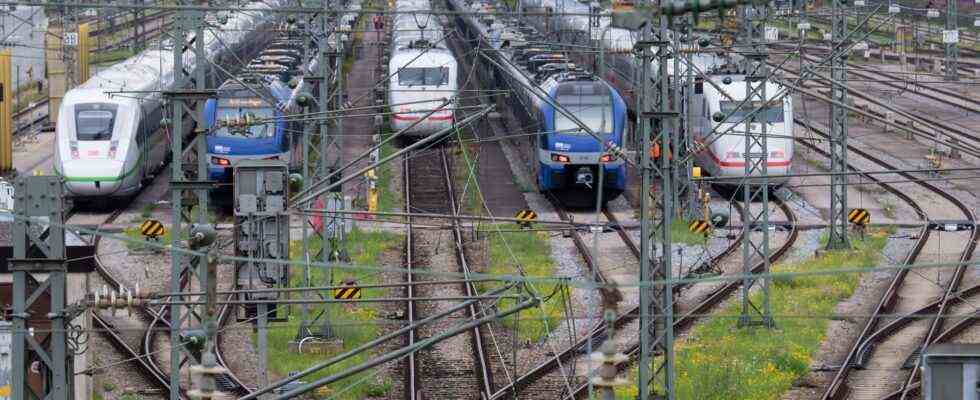Status: 08/24/2021 5:39 p.m.
After four days, the train drivers’ strike at the railroad ends that night. What did the labor dispute bring to the GDL union? Is a collective agreement in sight? What is the biggest problem in the conflict?
Four days of train drivers’ strike: Thousands of long-distance and regional trains, S-Bahn and freight trains remained in the depot nationwide. In some eastern German regions, 90 percent of the connections failed. In Munich, on the other hand, every second S-Bahn ran more or less according to the schedule.
If the traffic starts up again in the coming night after the strike, one thing is in the foreground for Deutsche Bahn: Above all, morning rush hour traffic should be back to normal, promises Bahn spokesman Achim Stauß. “We are confident that the train service will be back to schedule tomorrow after the strike, largely without any restrictions.” That succeeded after the first GDL strike. “I am optimistic that we will be able to offer the full range of trains again tomorrow.”
Problematic triangular relationship
Actually, the new collective bargaining law was supposed to regulate such labor disputes at Deutsche Bahn. But that obviously didn’t work out. Karl-Peter Naumann from the passenger association pro Bahn summarizes the background. The problem is not so much the relationship between the GDL and the railway. “The problem is that we have a triangular relationship, that we have two unions and one union always wants to be better than the other,” he says, referring to the larger rail and transport union (EVG), which competes with the GDL.
“The collective bargaining law, which was supposed to solve the problems, did not solve them. That is the much bigger problem,” says Naumann. “Because if Deutsche Bahn gives in to one union, the other will come and make the same demands. The EVG has already announced that.”
GDL expects a long labor dispute
The second wave of strikes brought little income for the GDL. The railroad as an employer signaled some kind of courtesy. You are welcome to negotiate a corona bonus for train drivers. However, there was no concrete offer of how high the premium should be and when it should be paid.
Because of the employer’s salami tactics, GDL boss Claus Weselsky expects a long labor dispute and further escalating strikes to force a collective agreement. “We will no longer be able to prevent future industrial action from going on for longer and over weekends,” he said. “Anyone who cannot be instructed and regards the railroad customers as a compliant crowd cannot expect a union of German locomotive drivers to renounce their basic rights out of consideration for the customers.”
It is unclear when the third wave of strikes will start, but it is very likely. From the point of view of the train drivers, the railway has not moved with the main demand for 3.2 percent more money. It offers a zero round for this year and does not want to raise wages in two steps until 2022 and 2023.
After four days of the GDL strike – the train goes up train traffic at night
Johannes Frewel, ARD Berlin, 8/24/2021 4:20 p.m.

